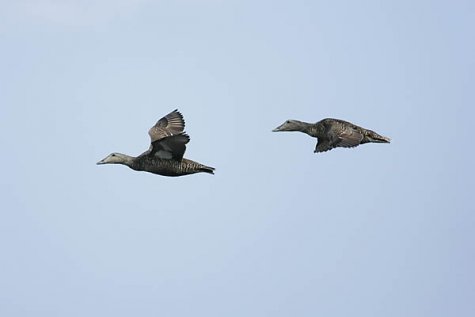VIDEO: Eider kindergarten
Video recorded by Fleur, LK forum
Photo: Arne Ader
Translation Liis
Common eider Hahk Somateria mollissima
A great number of big birds with their chicks – and we have a kindergarten; all female birds need not be mother eiders who have hatched chicks. The females incubated their four to six large greenish eggs without leaving the nest for about twenty-five days, and with such fasts one might succumb to hunger. So the female birds gather together to be able to go foraging while theguarding of the little ones against gulls would still be effecient. We have seen the attacking circling of the gulls near the little eider chicks.
The eider is our largest diving duck, length more than half a metre and weighing one and a half to two kilos. The female’s plumage is uniformly mottled in brown, on the back a golden feather pattern and lengthwise bands on the tail. The eider chicks have an almost black plumage. Diving ducks feed to a large extent on mussels that they look for in more than 4 metres deep water.
But where are the males, seen in spring in their black-and-white plumage? Almost at once after the females have started their egg-laying the males head by and by for the open sea to moult – always where there are less disturbances, enough mussels and clean sea-water. Family life is not for them. At the moment they may already be in a strangely mottled plumage.
Eiders
About 25 years ago the heraldic birds of Vilsandi were very numerous on our islets, up to some twenty thousand nesters. Today the number of nesting birds is estimated at three to seven thousand but it seems that the drastic decline has stopped.









